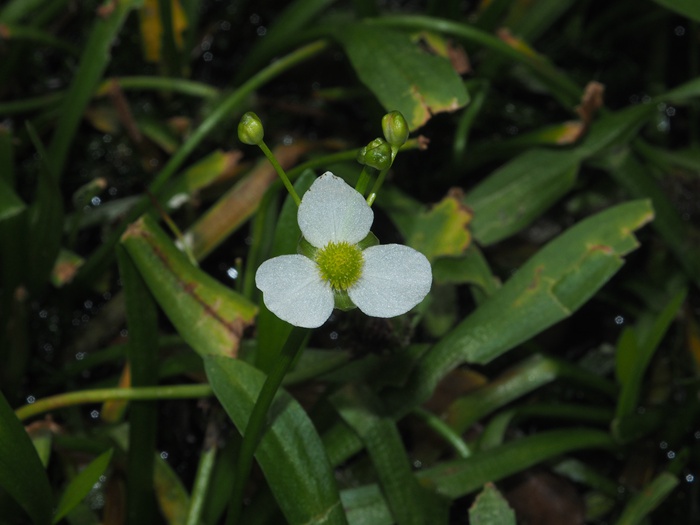- Scientific Name: Sagittaria pygmaea Miq.
- Ref: Ann. Mus. Bot. Lugduno-Batavi 2:138. 1865
- Synonyms: Blyxa coreana (H.Lév.) Nakai; Hydrolirion coreanum H.Lév.; Sagittaria altigena Hand.-Mazz.
- English Common Name: dwarf arrowhead, pygmy arrowhead
- Chinese Common Name: 矮慈姑 ǎi∙cígū, 瓜皮草 guāpí∙cǎo
- Japanese Common Name: ウリカワ [瓜皮] urikawa
- Family: Alismataceae
- Genus: Sagittaria
- Distribution: Paddy fields, marshes, and channels. Anhui, Fujian, Guangdong, Guangxi, Guizhou, Hainan, Henan, Hubei, Hunan, Jiangsu, Jiangxi, Shaanxi, Shandong, Sichuan, Taiwan, Yunnan, Zhejiang [Japan (including Ryukyu Islands), Korea, Thailand, Vietnam].
Plants stoloniferous. Petiole indistinct; leaf blade linear or subspatulate, 2-29 cm × 2-11 mm, sheathing basally, apex acuminate or obtuse. Inflorescences racemose, 1-10 cm, in 2 or 3 whorls of 3 flowers; bracts elliptic. Flowers unisexual; female flowers not exceeding 2, restricted to lowest whorl, sessile or only with very short pedicels; male flowers with pedicels 0.5-3 cm. Sepals obovate, 5-7 × 3-5 mm. Petals orbicular, 1-1.5 × 1-1.6 cm. Stamens 6-21; anthers yellow. Achenes broadly obovoid, 3-5 × 3-3.5 mm, abaxially cristate, with a broad wing and an adaxial beak. Fl. and fr. May-Nov. 2n = 22*. (Flora of China)


